All You Need To Know About The Historic Palatine Hill
The Palatine Hill is one of the crown jewels of Rome’s seven hills. Steeped in history, it’s where Ancient Rome supposedly began and was the prime spot for Roman high-rollers. Ancient times sing tales of Romulus and Remus being...
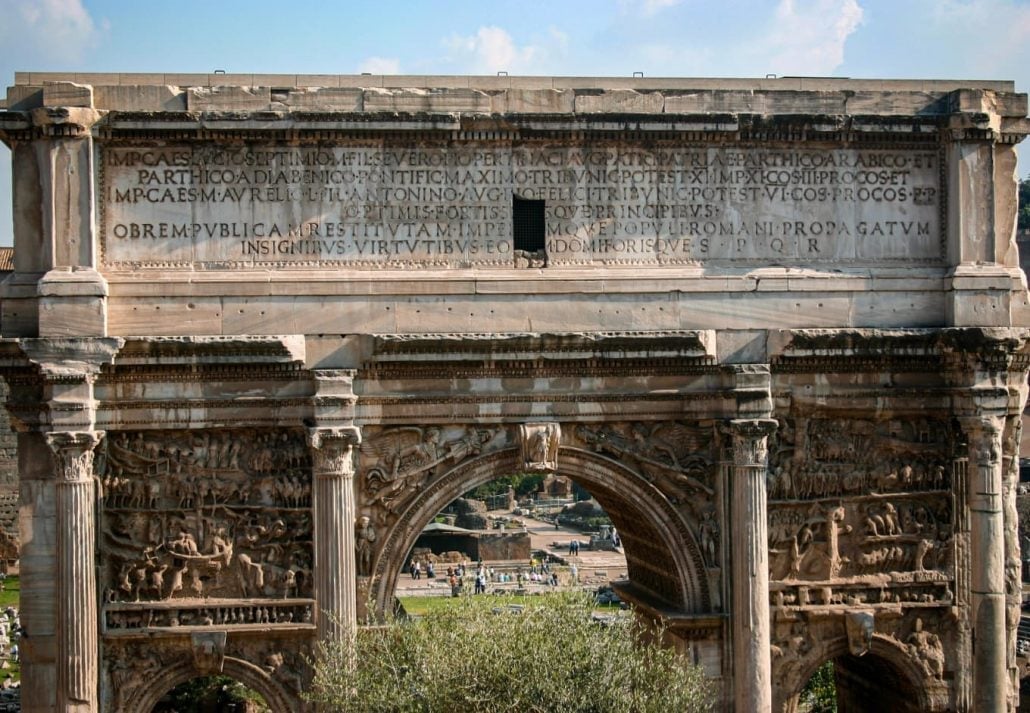
The Palatine Hill is one of the crown jewels of Rome’s seven hills. Steeped in history, it’s where Ancient Rome supposedly began and was the prime spot for Roman high-rollers. Ancient times sing tales of Romulus and Remus being found there, and later it became the playground for emperors who built extravagant imperial palaces. Today it’s an open-air museum with ruins showcasing Rome’s glorious past.
A Brief History About Palatine Hill

The Palatine Hill is steeped in myth (Romulus and Remus) and history (early settlements). Evidence suggests people lived there before Rome’s founding. Its prime location, cool breezes, and stunning views made it an elite neighborhood in Roman times.
During the Republican period, wealthy Romans built villas there and turned it into a residential district. Augustus, Rome’s first emperor then turned it into an imperial palace complex with grand structures.
Over time, some of these, like the Temple of Apollo, faded, while others were abandoned and left to morph into ancient ruins. The Middle Ages saw churches built on the Palatine, and the Renaissance brought gardens. Today, it’s a famed archaeological site full of imperial palaces showcasing the Roman Empire in all its glory.
Interesting Facts About Palatine Hill
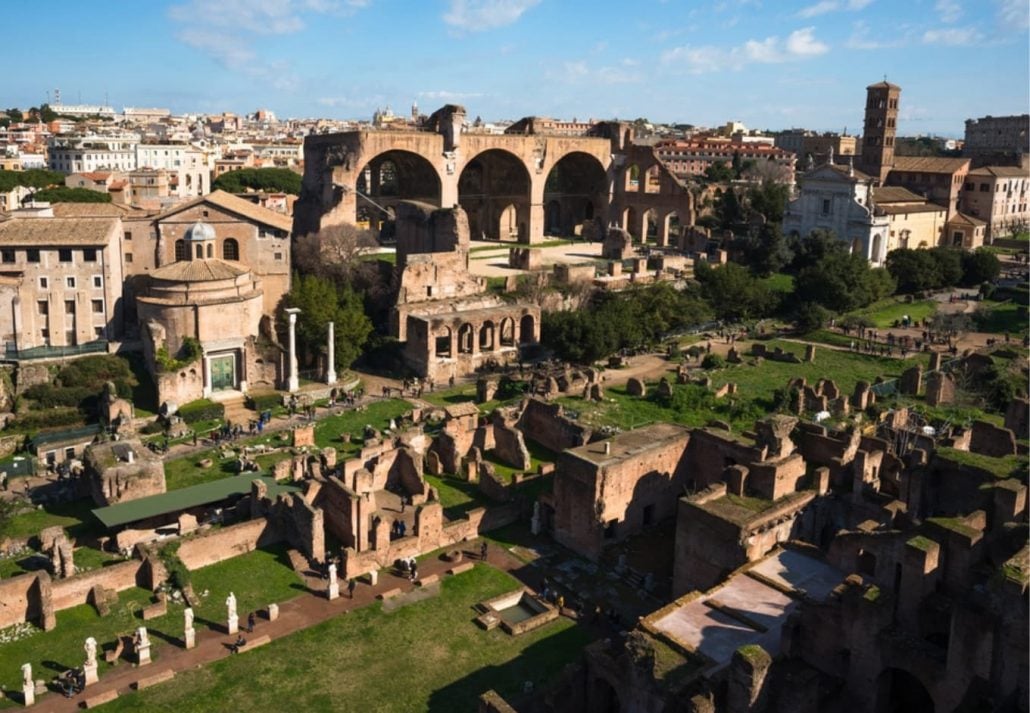
✦ Legend has it that Palatine Hill was the birthplace of the Italian capital of Rome. The story speaks of Romulus and Remus, Rome’s mythical founders, finding refuge in a Palatine cave, where a she-wolf cared for them.
✦ At its peak, Palatine Hill stands 51 meters above sea level. This makes it a prominent feature in the city, towering at least 40 meters over nearby landmarks like the Colosseum and Roman Forum.
✦ Traditionally, Palatine Hill is considered the highest of Rome’s legendary seven hills, upon which the ancient city was built. These hills were all encompassed by the city walls.
✦ Since the entire hill served as the posh neighborhood for Roman emperors, it’s believed to be the origin of the English word “palace.” The Latin name for the hill, “Palatinus,” is thought to have evolved into “palace” over time.
✦ The Palatine Hill has witnessed its share of drama. Caligula, a notorious emperor, was assassinated within the confines of the palaces. The young emperor met a brutal end in the cryptoporticus—a secret passage nestled under the hill’s palaces.
Things to See at Palatine Hill
Start your Palatine Hill adventure at the Palatine Museum, housed in a former convent built on an emperor’s palace! This small museum packs a punch, revealing the fascinating story of the hill and its imperial residents.
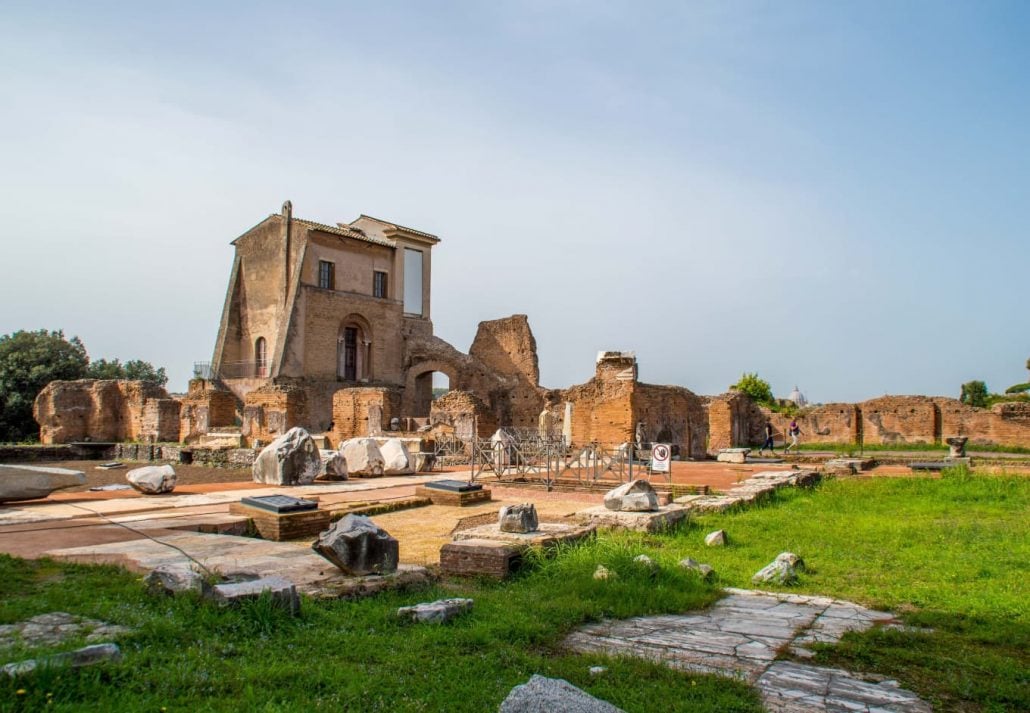
Emperor Domitian left his mark here in the 1st century AD. Besides the palace, the Stadium of Domitian is smaller than the Colosseum but perfect for athletic events. Today, these majestic ruins lie underground, offering an atmospheric experience on a guided tour.
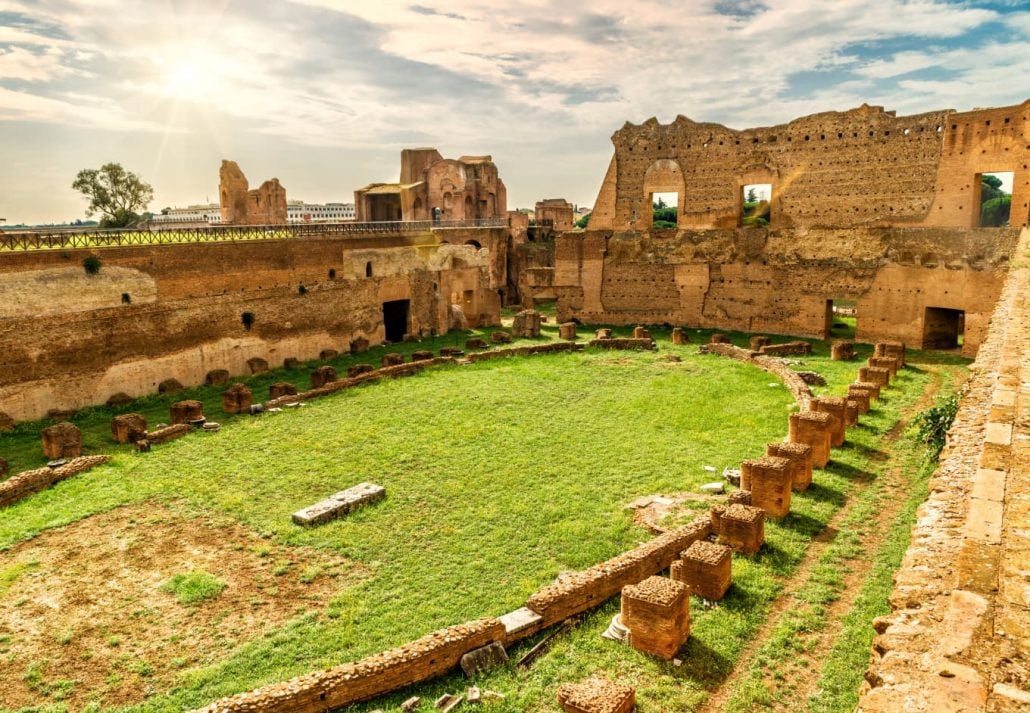
Domitian’s Flavian Palace also known as Domus Flavia and Domus Augustana, built near the end of his reign, served as a grand venue for lavish parties. While the ruins offer a remarkable perspective, don’t miss the sweeping views from Circus Maximus to really appreciate the palace’s grand scale.
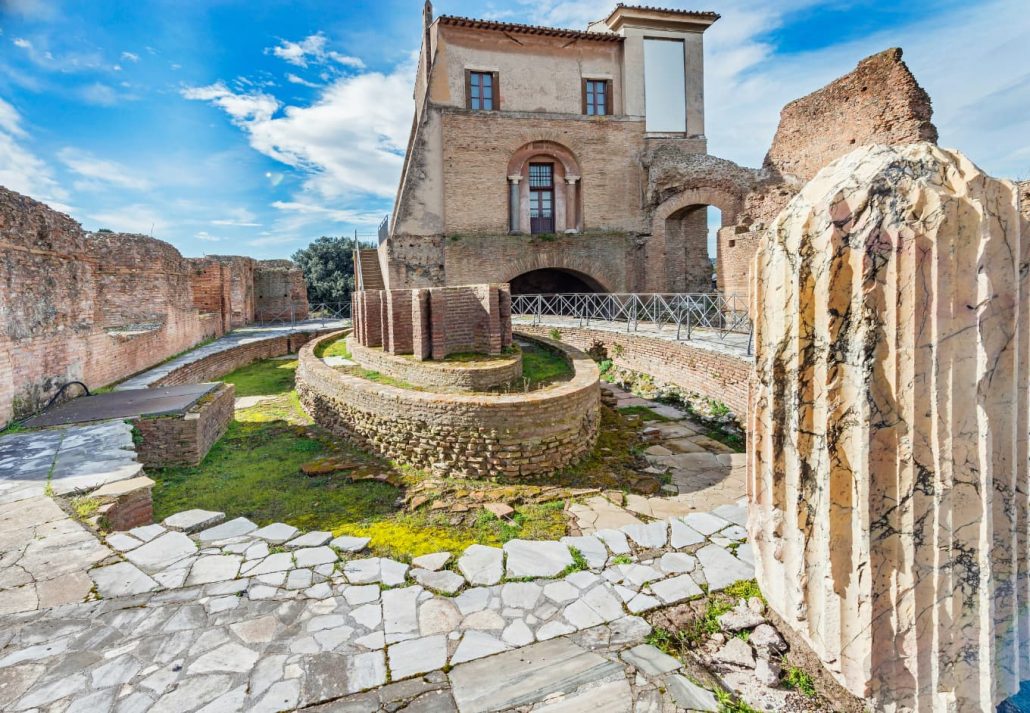
Head to the House of Augustus, the first sight that greets visitors. Explore the excavated remains of this emperor’s residence and get a glimpse into the lives of Roman rulers.
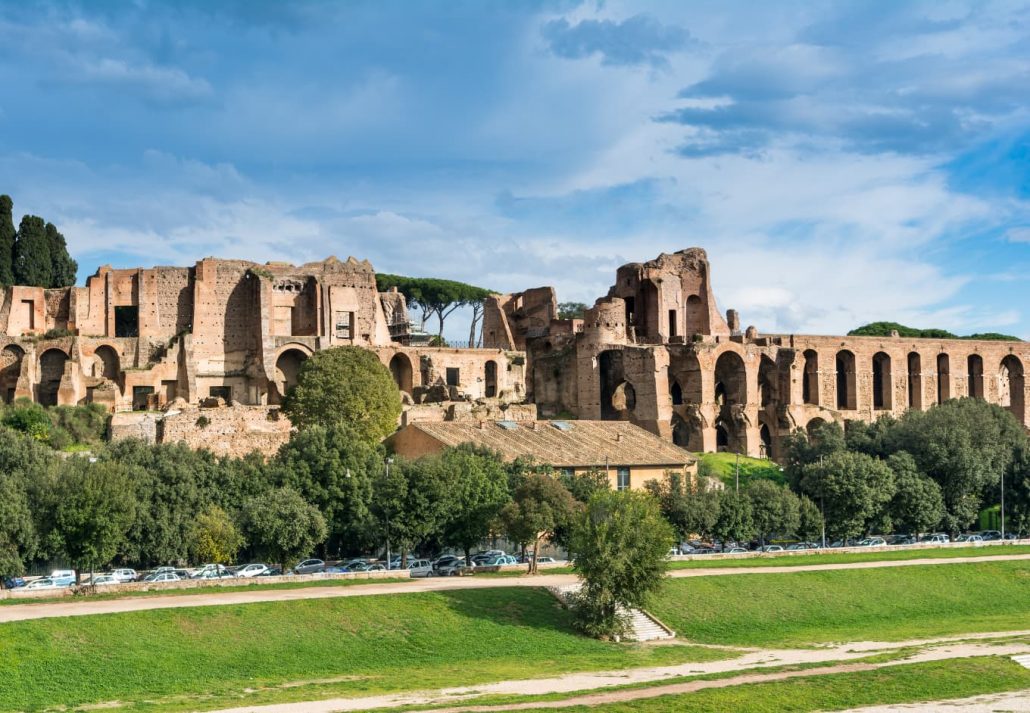
Next, delve into the House of Livia, believed to be the home of Augustus’ wife. Extensive archaeological excavations offer a window into the lives of the ancient Roman residents of Palatine Hill. The house is home to a wide array of awe-inspiring frescoes that can be enjoyed on a guided tour.
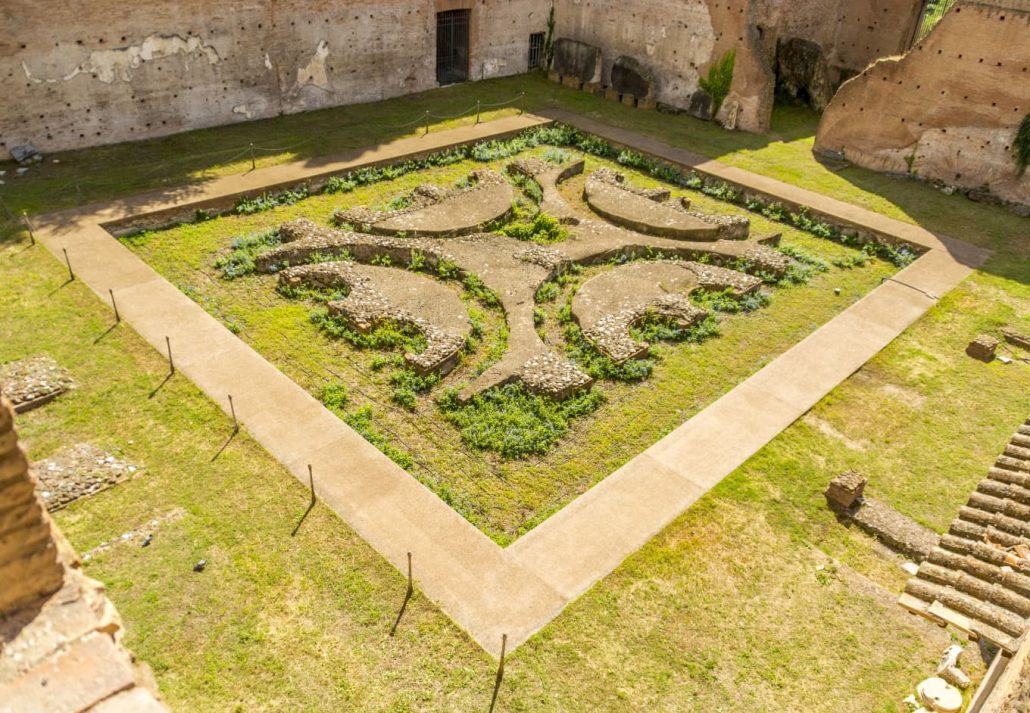
Emperor Septimius Severus of the 2nd century AD made significant contributions. He built a massive bath complex, the Baths of Septimius Severus, whose well-preserved ruins are a must-see.
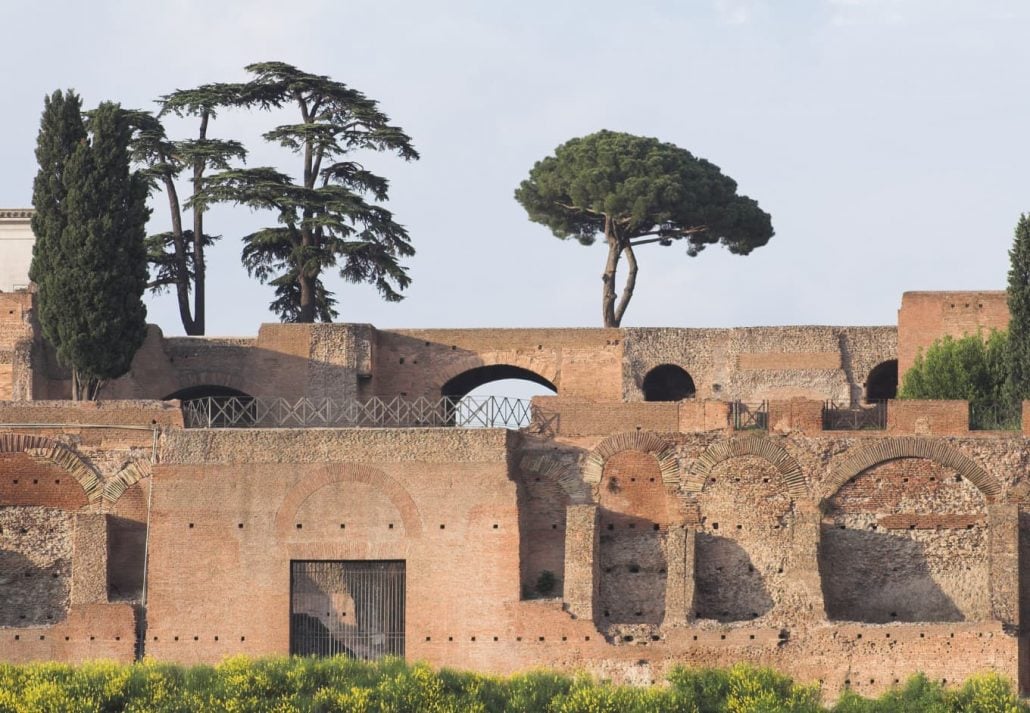
Tucked away on the Palatine Hill, the Orti Farnesiani, or Farnese Gardens, were a hidden gem. Unlike the grand public gardens of Rome, these private terraces cascaded down the slopes, offering a secret escape for the Farnese family.
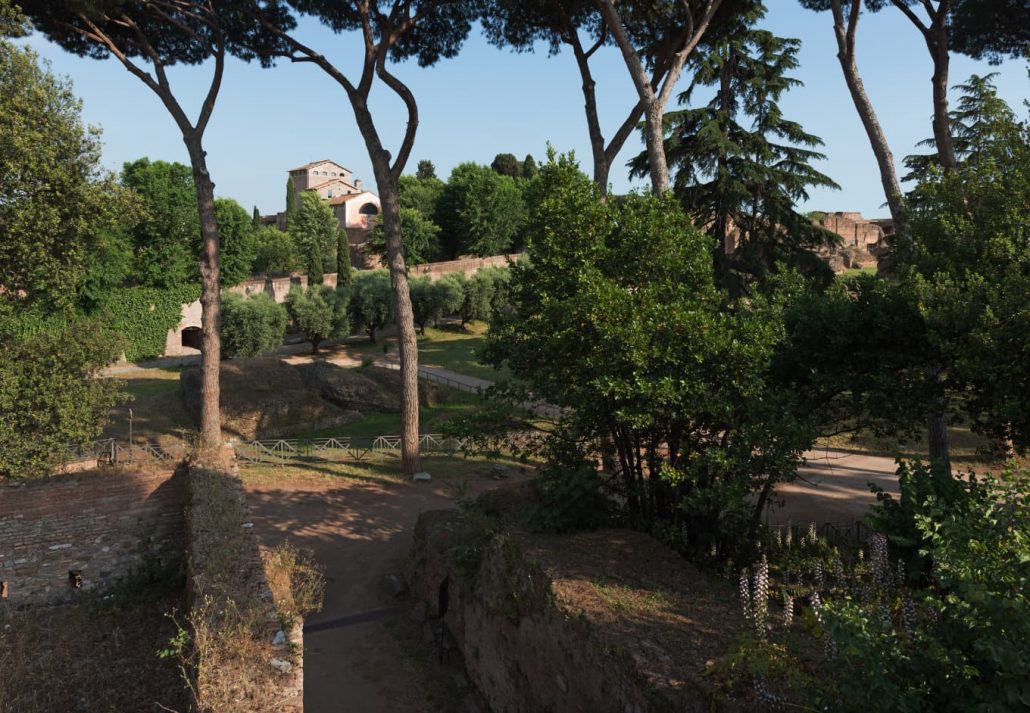
Adding to the historical intrigue of the Palatine Hill is the Elagabalium. This temple, perched on the northeastern corner of the hill, was built by the Roman emperor Elagabalus. Unlike other Roman temples, it wasn’t dedicated to a traditional deity. Instead, Elagabalus dedicated it to Sol Invictus, a sun god.
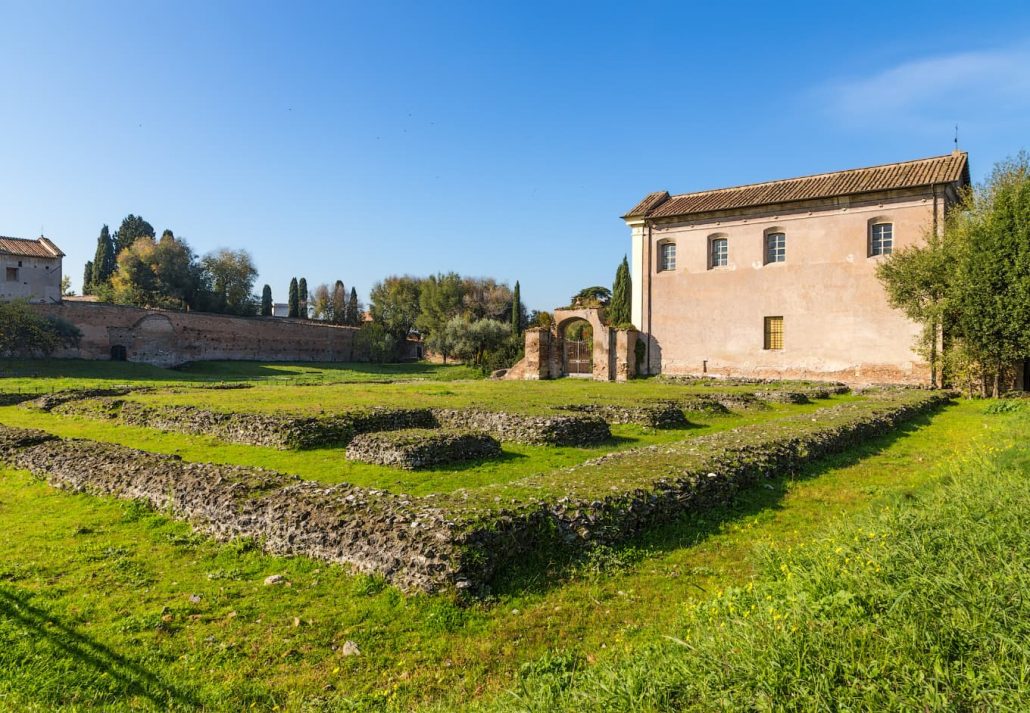
Stay Near Palatine Hill
For easy access to Rome’s top sights, consider staying near Palatine Hill. You’ll be steps away from must-see attractions, allowing you to beat the crowds by arriving early. Here are some fantastic accommodation options to suit different styles:
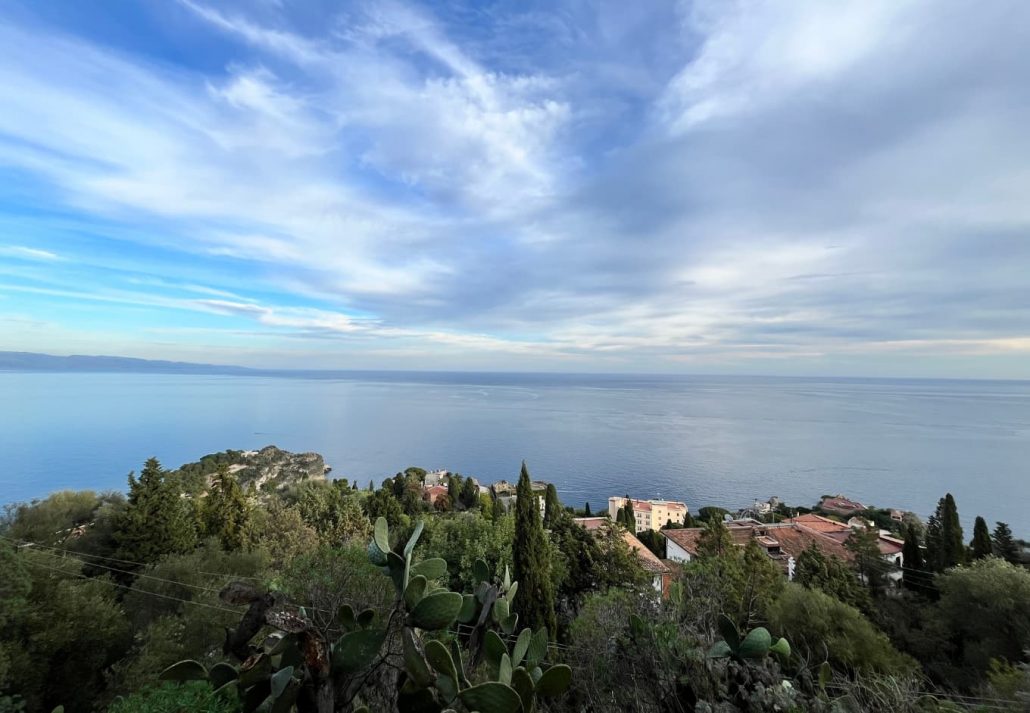
Foro Romano Luxury Suites: This highly-rated hotel sits just 550 yards from the renowned Roman Forum. Offering cozy rooms (some with balconies!), it’s perfect for couples.
For a budget-friendly option, consider Hotel Tempio di Pallade. If you prefer something elegant with a rooftop terrace, Hotel Impero is a good choice.
Rhinoceros: If you prefer an apartment-style stay, Rhinoceros offers stunning holiday flats. Blending modern luxury with historic charm, these flats provide a unique Roman experience.
Plan Your Visit To Palatine Hill
📌 Location
Palatine Hill, one of the ancient parts of Rome, towers 130 feet above the Roman Forum. It is located near the Colosseum and the entrance is at Via di San Gregorio.
Address: 00186 Rome, Metropolitan City of Rome, Italy. Find on map
⏱️ Opening Hours
Palatine Hill is open daily.
➤ Summer (April-August): 8:30 AM – 7:00 PM
➤ Winter (September-March): 9:00 AM – 4:30 PM
🚗 Getting There
Metro: Take Line B to Colosseo Station.
Bus: Take buses 60, 75, 84, 85, 87, 117, 810 or 850 to the Colosseo stop.
🔍 Tips
➤ Make sure to purchase your tickets in advance. This will help save time spent otherwise waiting in lines, especially during the peak season. Entry tickets are valid for the Palatine Hill, the Roman Forum, and the Colosseum.
➤ Visit the Palatine Hill either early in the morning or later in the afternoon. As an outdoor attraction, the site can get pretty hot and crowded during the middle of the day.
➤ There’s going to be a lot of walking involved, so make sure to wear comfortable shoes that can sustain long walks.
➤ Make sure to carry a hat and sunscreen. The Palatine Hill offers little shade, so protection from the sun will be necessary.
Frequently Asked Questions
What is Palatine Hill?
Palatine Hill is one of the seven hills of Rome and boasts a rich history dating back to 753 BC. It’s an archaeological site packed with ruins and holds immense significance in Roman mythology and culture.
Why is Palatine Hill famous?
What can I see on Palatine Hill?
How much does it cost to visit Palatine Hill?
Entry to Palatine Hill is included in the same ticket as the Colosseum and Roman Forum. Consider purchasing your tickets online to avoid queues.
Is a guided tour of the Palatine Hill worth it?
Guided tours can significantly enhance your visit by providing historical context and interesting details you might miss on your own.
When is the best time to visit Palatine Hill?
Due to Rome’s warm weather, consider early mornings or evenings to avoid the heat. Opt for weekdays if possible, as weekends tend to be busier.

 Lynk
Lynk 
































